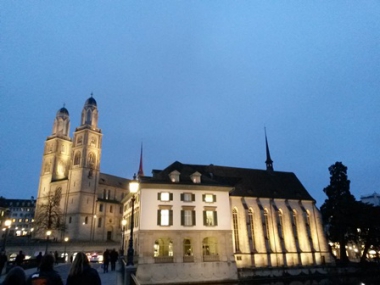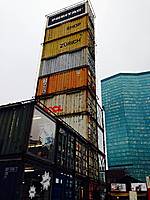City branding in Zurich: a work in progress
Edited on
25 November 2015Since 2013 CityLogo has undertaken a fair number of transnational activities to relearn on the subject of city branding, to move forward the state of the art on how cities brand and market themselves in a more intergrated manner. The last one a study visit to Zurich. But, why Zurich?

City branding in Zurich: a work in progress
By Miguel Rivas, lead expert for CityLogo mrivas@grupotaso.com
CityLogo is still the on-going URBACT network on innovative city brand management. One of the very few transnational projects trying to move forward the state of the art on how cities brand and market themselves in a more integrated manner. To some extent, CityLogo is a reaction to the most common gaps in the field. A sort of city branding ‘re-learning’, since the practice is often under the influence of an overly conventional marketing approach. To that aim a fair number of transnational activities have been undertaken since 2013, which are also in association with the Eurocities Working Group on City Branding. The last one being a study-visit to Zurich. However, why Zurich?
Zurich is the largest city of a relatively small country. Around 400,000 inhabitants live within the municipality and 1.8 million in the Greater Zurich area . Besides its strong specialisation in global financial services, Zurich hosts a diversity of high-tech manufacturing sectors and tourism is likewise a growing industry. The business environment is unique, fuelled by one of the smallest taxation of developed countries and a bunch of leading research institutes and universities such as the University of Zürich UZH , the Zürich University of Applied Sciences ZHAW or the Swiss Federal Institute of Technology Zürich ETH . Furthermore, the city used to rank at the highest positions in many world- and Europe-wide indexes regarding quality of life, wealth and innovation. As a result the city-region is a magnet for skilled workers from all over the world, and at present one third of the population are resident foreigners. Cosmopolitan, multilingual and hyperconnected, despite its modest size, Zurich has quickly developed a strongly globalised profile.
In this context, a number of entities were promoting the city internationally as a business place on the one hand and as a destination for visitors on the other. A range of key stakeholders were also marketing the city to specific audiences and segments such as the international airport and universities, etc. First initiatives to unlocking some commonalities between those sector-focussed city marketing practices to increase coordination and promote a more unifying city narrative were initiated a decade ago. After several failed attempts, the final result in 2011, was the realisation of today´s cooperation between the City and the Canton of Zurich, Zurich Tourism and the Greater Zurich Area (the body in charge of inward investment attraction). It is what they call the Agreement for an Integrated Destination Marketing, which has led to a common visual identity under the claim “Zurich World Class, Swiss Made” as well as an interchange of information and a few of common projects and events. However, this is still a work in progress, since to some extent the cooperation would need to be extended to other relevant stakeholders and be more clearly institutionalised in terms of a common platform for co-decision-making, a funding model and dedicated team, among other issues.
Furthermore, smoother articulation of the different efforts related to attractiveness and territorial marketing between the local and canton level on one side and the state level on the other, especially in a small country like Switzerland (8.2 million of inhabitants) is a hot topic too. Indeed, there is a range of agencies belonging to the federal government promoting the Country worldwide, e.g. Switzerland Tourism , Pro Helvetia (culture), Switzerland Global Enterprise (export and inward investment), Swissnex (science and innovation),Presence Switzerland (participation in big global events).
To summarise, as regards to integrated city branding, and after a long period trying, Zurich cannot exhibit a consolidated experience yet. They have got first significant achievements in the last years and are facing a number of pending challenges, most of them concerning the building of a stronger collaboration model, horizontally (further alignment of the stakeholders operating within the city-region) and vertically (better articulation among the three main working scales in the country, local-canton-federal government). This would be the basic aim of integrated city branding everywhere, if the field is addressed not just as a matter of logos and overall campaigns, but as a cohesive force in the city. From this perspective it is a very political issue, and as such political awareness is a necessary condition to pave the way to a more integrated approach in the way cities brand and market themselves.
 Submitted by Simina Lazar on
Submitted by Simina Lazar on




